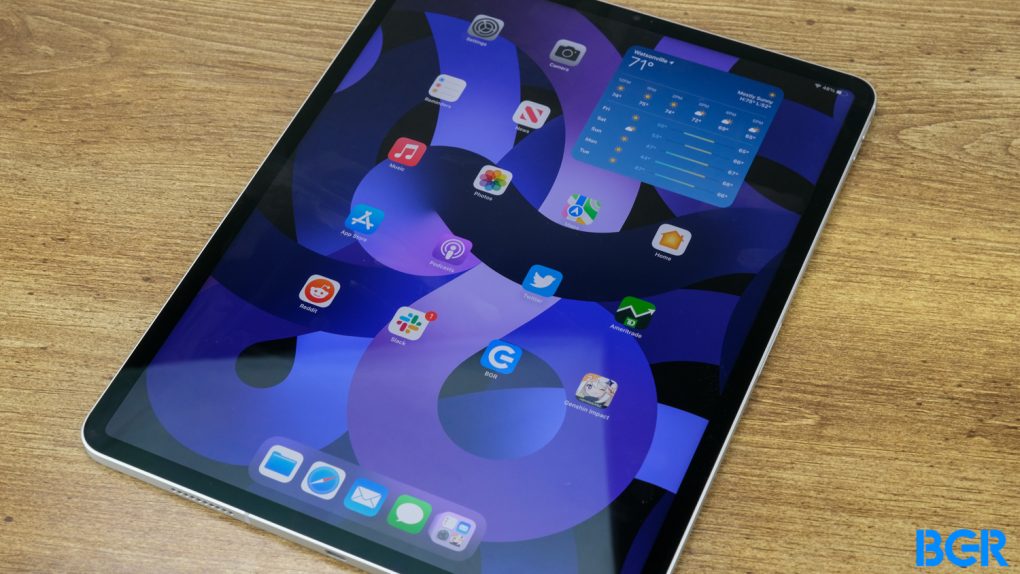Over the weekend, we finally got a trustworthy release date estimate for the OLED iPad Pro. Bloomberg’s Mark Gurman said the launch will happen sometime during the week of May 6th. That’s great news for anyone looking forward to getting Apple’s best tablet ever.
I’m on that list of prospective buyers. I’ve been thinking about the OLED iPad Pro a lot lately and even somewhat changed my stance on buying one. But since the OLED iPad Pro will be more expensive than previous iPad Pro variants, I’m not ready to order it right away. Instead, I’ll wait for June to arrive, when Apple hosts its annual WWDC event.
That’s where Apple will unveil the next-gen operating systems that will be available later this year. iOS 18 and iPadOS 18 will be the stars of the show, with the first beta coming out soon after WWDC 2024.
Apple’s dream is for the iPad to replace a traditional computer. I also share that dream, but the current iPadOS experience can’t pull it off. The OLED iPad Pro will be a great tool for consuming content, especially thanks to that display upgrade. However, the current state of iPadOS makes it unsuitable for my work needs.
It’s not that I want it to replace my MacBook, but I’d be thrilled if the iPadOS experience resembled macOS. The user interfaces are almost identical, so why not transform iPadOS into a more powerful operating system that’s more like macOS?
After all, the OLED iPad Pro will feature the M3 chip that powers Apple’s newest MacBook Air and MacBook Pro models. Apple’s M-series chips are the chips everyone in the industry is trying to beat. The iPad Pro could be a tremendous computer with big updates that come via iPadOS 18.
I won’t get my hopes up that it’ll happen, however. We don’t have enough rumors to suggest that iPadOS 18 will deliver the massive changes I want. Specifically, I want multitasking to look more like it does on a Mac.
It’s all about running apps side by side, arranging windows, and stacking apps on top of each other. Forget Stage Manager. That’s not what I need on either the Mac or iPad.

I am not looking to permanently replace the Mac with an iPad anytime soon, but how cool would it be if I could do it temporarily?
I’m considering this transformation for my computing needs because of my hobbies. I’ve gotten back to running and I’m training for a marathon. I’ll enter more races in the future, which will involve some traveling. That’s where the OLED iPad Pro could come in handy if iPadOS 18 offered a more complete computing experience.
I explained why I’d want the 11-inch iPad Pro over the 13-inch model. It’s about weight, and thanks to the new OLED screen tech, the OLED models should be thinner and lighter than their predecessors.
The same principle applies to traveling. I want to pack as light as possible, and that includes the computers I use. I’d love to rely on the iPad Pro for both fun and work while I’m on the go, and I’d hate to pack a MacBook and an iPad.
As it is right now, there’s no way I’d leave the MacBook behind and choose an iPad over it. But what if iPadOS 18 changes things around?
The point is that I still can’t justify the OLED iPad Pro’s price. Not if the tablet becomes a device for streaming movies, reading books, or browsing the web. I could just go with a different iPad for that. Maybe an iPad mini, which is also on my short list of devices.
I’ll add that any iPad running on an M-series chip could become a great computer after a major iPadOS upgrade. I wouldn’t even need to spend more money on the OLED iPad Pro when the M1 and M2 iPad Pro and iPad Airs would work just as well. However, these models do not feature OLED panels.
With all that in mind, I won’t pull the trigger on an iPad purchase until June 10th at the earliest. That’s when Apple will hold its WWDC 2024 keynote, at which point we’ll learn everything about iPadOS 18.








